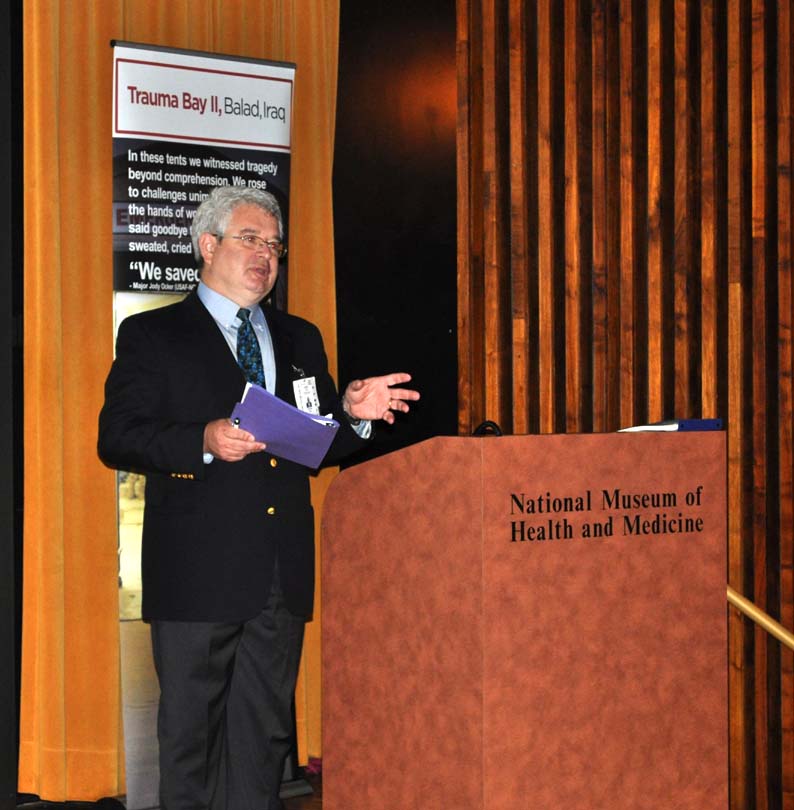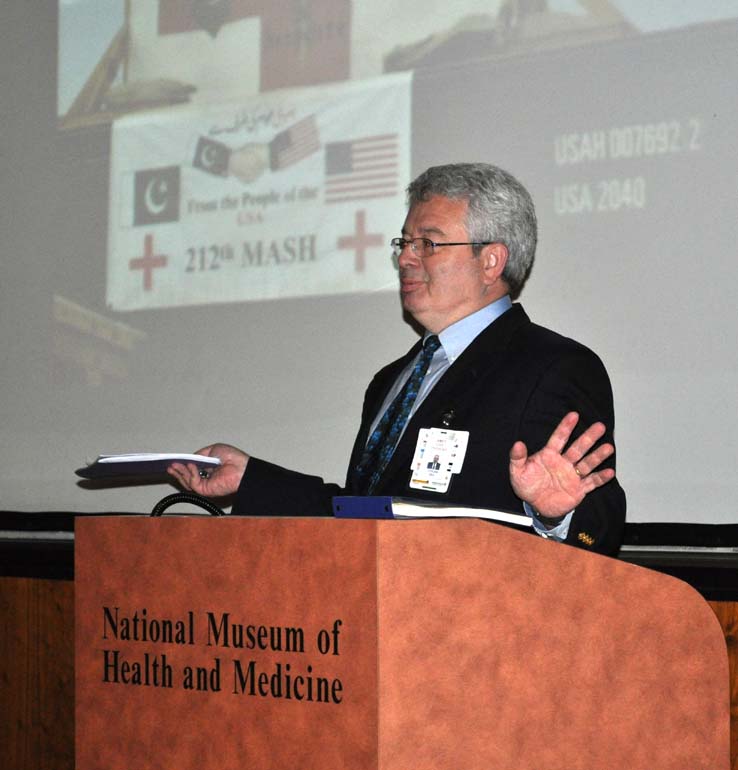Retired Air Force Flight Surgeon Describes Technological Innovations in Air Transport as Part of Museum's Lunchtime Talk Series in Celebration of the USA Science & Engineering Festival
 |  |
Washington, D.C.: Jim Cox, a retired U.S. Air Force flight surgeon and Critical Care Air Transport Team (CCATT) physician, appeared at the National Museum of Health and Medicine October 12, 2010 to discuss the evolution of the U.S. Air Force air evacuation system over the last decade. Cox's talk was part of a series of lectures the Museum hosted in celebration of the USA Science & Engineering Festival, which culminated in a two-day expo on the National Mall in Washington, D.C., October 23 and 24, 2010.
Cox's talk described the development of CCATT, which was launched by the U.S. Air Force in the mid-1990s to provide Intensive Care Unit (ICU) – level care to patients during transport from the theater to the hospital. The teams consist of a critical care physician, critical care nurse, and respiratory therapist, accompanied by the supplies and equipment necessary to create a critical care environment that can move with the patient during evacuation. Team members are specifically trained to provide specialized care in the high-altitude environment. He noted that the U.S. is the most advanced in the world when it comes to in-air patient transport and care.
Cox also described the development of innovative medical technology to provide life support to critically injured service members during missions lasting over eight hours. He said with the proper equipment, CCATT teams can turn almost any airframe into a functioning ICU.
"Little innovations can make a huge difference," he said.
One piece of equipment that CCATT members have come to rely on and that is on display in the Museum is the Special Medical Emergency Evacuation Device, known as SMEED, a metal framework that attaches to evacuation litters and holds individual pieces of medical equipment needed for optimal patient transport. The SMEED can be seen in the Museum's exhibit, "Trauma Bay II, Balad, Iraq."
NMHM is proud to have been an Official Partner of the inaugural USA Science & Engineering Festival. The Festival, the country's first national science festival, was a collaboration of over 500 of the country's leading science and engineering organizations and aimed to reignite the interest of our nation's youth in the sciences. During the two-day expo on the National Mall October 23 and 24, children, teens and adults had the opportunity to explore all facets of science and engineering through hundreds of fun, hands-on activities.
Related Links:



